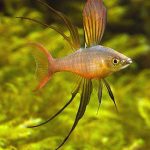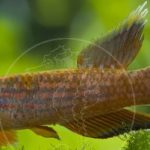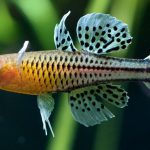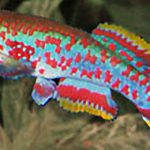Description
Spectrolebias Reticulatus is already extinct in nature. They lived at a sand bank in Rio Xingu near Altamira and due to a power plant construction their habitat was destroyed. They belong to the group of South American Annuals and lay their eggs in the substrate.
Ideal temperature is between 22 and 25 degrees. As they live in pools, they do not like current very much, so slow filtering is necessary. They need soft water of about 200 microsiemens and natural soil like peat moss as bottom. For spawning the substrate must be as deep as the fish are long, as they dive in completely into the soil.
Spectrolebias Reticulatus like floating plants and should be kept as a trio, 1 male and 2 or more females, but are not suited for a community ttank.
For the hobbist they are quite interesting to watch, as they show a very exciting spawning behavior. As a diet the need live food, worms, brine shrimps, cyclops will do, which is quite challenging if you do not have regular access to live food.
They stay quite small up to 3 cm and are suited for a nano tank, about 30 litres is good enough for a trio.
They are annuals, so in nature they lived one season, in rainy season they grow up, spawn and lay the eggs into the soil. When the dry season comes the pools loose water and fall dry. Only the soil stays moist. Now the eggs make a socalled diapause in their development. The adults die. With the new rains the pools get flooded again and they hatch and a new generation starts.
In captivity they can live longer, but do not expect them to live more than two years.




